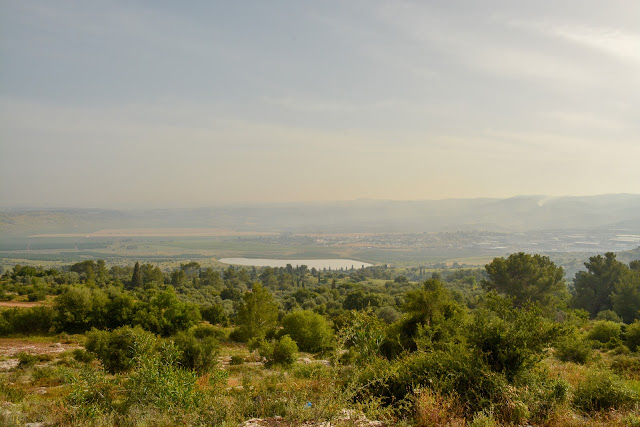In preparing for this trip I had one prayer. "Speak to me."
It's not that God can't speak to anyone anywhere, but the Holy Land is special. God picked that place and put his stamp in time and history by working through people and places to bring his plan of salvation to all. I did not want to miss what God needed me to see and hear from him in Israel.
There were three times in particular which God spoke to me loud and clear, not through audible words, but through the peace that only his Spirit brings.
At the Western Wall
On the Sabbath, we went to the Western Wall of the Temple Mount. We were encouraged by our guides to move among the Jewish people who were singing and praying at the wall. Men on the left and women on the right. We were assured we would be welcomed. Indeed we were. What a blessing to pray at the wall with fellow seekers of God. At the Wall, God spoke to me saying, "I love all my children." With his words, he put a love in my heart for the people of Israel like I've never known. This is complicated, because his children at the Western Wall do not know Jesus as their Messiah. But God reminded me, that though in my own sin, I reject him again and again, his love for me is steadfast. And so is his love for the children of Israel. And so I will pray for the people of Israel to know their Messiah, Jesus, someday.
 |
| The Western Wall of the Temple Mount |
At En Gedi
The week prior to leaving, Bonnie and I shared our story of our son, Caleb, and his battle with cancer and passing. But we shared how God was with us at the moment of his passing and his presence gave us a peace that was beyond all sorrow. We also shared how special Psalm 63 was for us during this difficult time in our lives.
At En Gedi, we walked up the wadi where David hid when he life was being pursued by the jealous king, Saul. David's life had hit rock bottom, literally, for En Gedi is at the Dead Sea, the lowest physical point on earth. And yet in the depth of his despair, God was with him, lifting his spirit up to find refreshment and life. At En Gedi, when we saw the springs of water that nourished David and the sanctuary that he worshiped God in, we were once again blessed by God's presence, touching us and assuring us of his never-ending peace and love for us. As you read Psalm 63, imagine the barest of desert canyons and yet a spring flowing from the ground bringing life and refreshment to all who find rest at its waters.
 |
| Springs of En Gedi |
Psalm 63
You, God, are my God,
earnestly I seek you;
I thirst for you,
my whole being longs for you,
in a dry and parched land
where there is no water.
2 I have seen you in the sanctuary
and beheld your power and your glory.
3 Because your love is better than life,
my lips will glorify you.
4 I will praise you as long as I live,
and in your name I will lift up my hands.
Flying Home
The challenges of planting a church are beyond what I ever imagined, but the joy of seeing God move and show us he's got all things under his control are even more amazing. Therefore, as my thoughts turned toward home and the challenges that awaited me, God spoke to me, saying, "I will never fail you" through this special song. I love how visual this song is, as it sings about walking around Jericho and God fighting our battles for us. Yes, LORD, you've got this!!!
Do It Again (Elevation Worship)
Walking around these walls
I thought by now they'd fall
But You have never failed me yet
Waiting for change to come
Knowing the battle's won
For You have never failed me yet
Your promise still stands
Great is Your faithfulness, faithfulness
I'm still in Your hands
This is my confidence, You've never failed me yet
I know the night won't last
Your Word will come to pass
My heart will sing Your praise again
Jesus You're still enough
Keep me within Your love
My heart will sing Your praise again
Your promise still stands
Great is Your faithfulness, faithfulness
I'm still in Your hands
This is my confidence, You never failed
Your promise still stands
Great is Your faithfulness, faithfulness
I'm still in Your hands
This is my confidence, You never failed me yet
I've seen You move, You move the mountains
And I believe, I'll see You do it again
You made a way, where there was no way
And I believe, I'll see You do it again


























